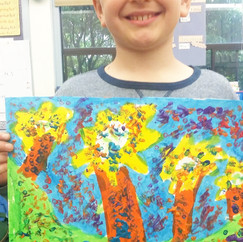Totally Dotty
Pointillism describes a technique in which hundreds of small dots or dashes of pure color are applied in order to create maximum luminosity. This technique relies on the ability of the eye and mind of the viewer to blend the color spots into a range of tones. This technique is in sharp contrast to the traditional methods of blending pigments on a palette. The subject-matter is not as important as dots in Pointillist compositions. It’s all about the dots and the image they create. In 1886, French painters Paul Signac and Georges Seurat, experimented with the technique, but it is a technique that has been used in some variation ,for thousands of years by the Aboriginal artists of Australia . When the two modern painters began using it, critics and artists of the time period thought it to be quite revolutionary. Ironically, it predated and mimics the four-color CMYK printing process used by some color printers and also some computer art.

“A Sunday Afternoon on the Island of La Grande Jatte” (Georges Seurat) is by far the most famous of the Pointillism paintings. It was George Seurat's masterpiece, over 6 feet tall and 10 feet wide and done with tiny little dots of pure color. Seurat worked on it for around two years. Impressionists, such as Claude Monet and Vincent van Gogh, often used small dabs as part of their technique, Pointillism artists took this idea a step further, by painting tightly packed, individual dots of pure color. When viewed from afar, the viewer’s mind and eye blur the dots together to create detailed images, comprising a fuller range of tones than the dots provide alone,introducing a completely new perception in the field of color studies. Pointillism had a huge influence on various art movements, in the 19th century and the 20th centuries.


























